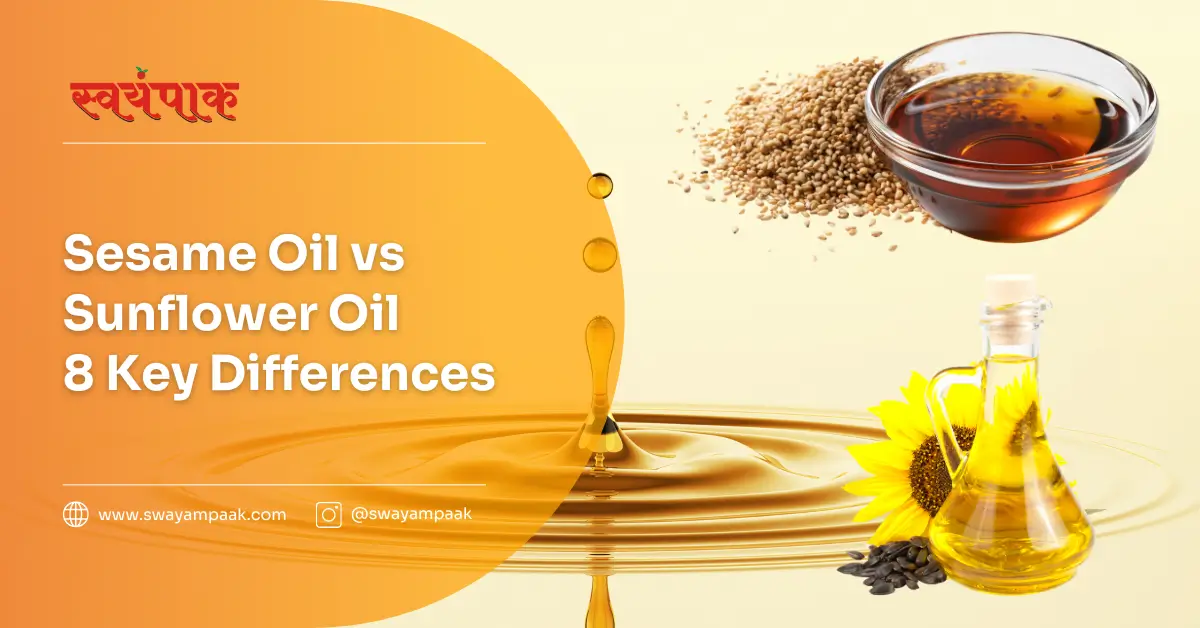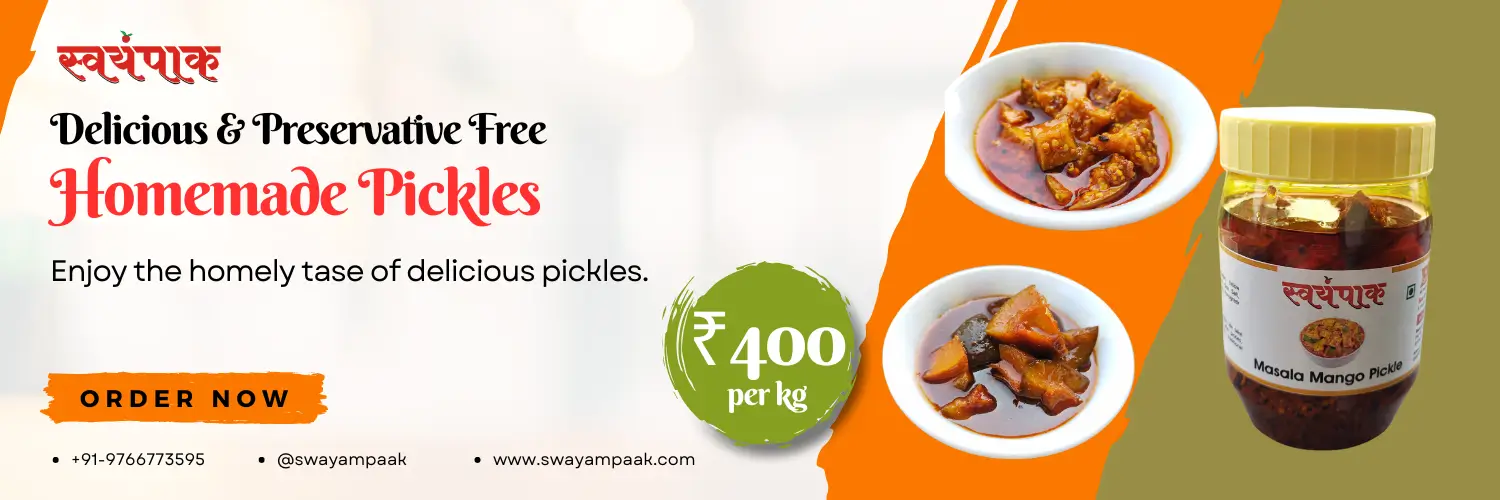In your kitchen cabinet, surrounded by all sorts of spices and condiments, sit two bottles of oil: sesame oil and sunflower oil. Both seem commonplace, yet they hold the power to elevate your dishes or leave them, well, a little flat. But when it comes to choosing between them, confusion can cloud the decision. Fear not, home cooks!
In this article Sesame Oil vs Sunflower Oil, to understand the key differences between sesame oil and sunflower oil. We’ll delve into their smoke points, flavour profiles, and health benefits, so you can select the perfect oil for every culinary creation. From sizzling stir-fries to flavourful finishing touches, get ready to unlock the secrets of these versatile oils!
Here are the 7 key takeaways on sesame oil vs sunflower oil:
- Smoke Point: Sesame oil has a lower smoke point (around 350°F) and is better for low-heat cooking, while sunflower oil has a higher smoke point (around 450°F) and is ideal for high-heat cooking.
- Flavour: Sesame oil offers a nutty, toasted flavour, perfect for Asian-inspired dishes. Sunflower oil has a neutral flavour that doesn’t overpower other ingredients.
- Health Benefits: Sesame oil is rich in antioxidants and monounsaturated fats, while sunflower oil is rich in vitamin E and polyunsaturated fats.
- Best Uses: Sesame oil is great for drizzling on stir-fries, noodles, soups, salad dressings, and marinades. Sunflower oil is versatile for high-heat cooking (frying, searing), baking, and salad dressings.
- Sesame Oil Fun Fact: Sesame seeds, the source of sesame oil, are one of the oldest known crops, cultivated for over 3,500 years.
- Sunflower Oil Fun Fact: Commercial production of sunflower oil only began in the 19th century. There are different types, with high oleic sunflower oil boasting a higher smoke point.
- The Verdict: There’s no single winner! Choose the oil based on your recipe’s needs. Sesame oil adds Asian flair for low-heat dishes, while sunflower oil is a neutral all-rounder for various cooking methods. You can even combine them!
Sesame Oil vs Sunflower Oil
Sesame Oil
Close your eyes and imagine a dish bursting with a deep, toasted aroma. Sesame oil, the nutty maestro of the culinary world, weaves this magic with its rich, nutty flavour that lingers on the palate. This versatile oil, extracted from sesame seeds, comes in two forms: toasted and untoasted.
Toasted sesame oil, a dark amber liquid, boasts a bolder flavour profile. A touch goes a long way, adding an Asian-inspired depth to stir-fries, noodles, and even marinades. However, its lower smoke point makes it unsuitable for high-heat cooking.
Untoasted sesame oil, lighter in colour and flavour, shines in high-heat applications. Its subtle nuttiness complements salad dressings, marinades, and even baked goods.
Sunflower Oil
Shine bright in the kitchen with sunflower oil, the versatile workhorse that won’t steal the spotlight. Unlike some oils with strong personalities, sunflower oil boasts a light, neutral flavour that complements any dish. But its talents go beyond taste.
This sunny oil excels at high-heat cooking. From perfectly crisp pakoras to golden French fries, sunflower oil handles the heat beautifully, ensuring your food cooks evenly without a hint of burnt flavour.
Baking enthusiasts, rejoice! Sunflower oil’s neutral character allows the true flavours of your cakes, cookies, and other baked goodies to take centre stage. No competing tastes, just pure deliciousness.
Smoke Point Smackdown: Sesame Oil vs Sunflower Oil
| Characteristic | Sunflower Oil | Sesame Oil |
|---|---|---|
| Flavour | Neutral, mild taste | Strong, nutty flavour |
| Smoke point | Higher (450°F/232°C) | Lower (350-410°F/177-210°C) |
| Culinary uses | All-purpose cooking, frying, baking | Often used as a flavouring oil, particularly in Asian cuisine |
| Nutritional profile | Higher in vitamin E | Contains more antioxidants like sesamol and sesamin |
| Colour | Light yellow | Golden to brown |
| Production method | Extracted from sunflower seeds | Pressed from sesame seeds |
Smoke Point Smackdown: Sesame Oil vs Sunflower Oil
Imagine a sizzling pan – that’s the sound of oil reaching its smoke point, the temperature where it breaks down and smokes. Knowing your oil’s smoke point is crucial to avoid burnt flavours and unhealthy consequences. In this corner, we have sesame oil, prized for its nutty aroma, but with a low smoke point of around 350°F.
This makes it a no-go for high-heat frying. In the other corner, sunflower oil boasts a high smoke point of around 450°F, making it a champion for searing and stir-fries. So, next time you heat the pan, choose your oil wisely based on its smoke point – sesame oil for low-heat drizzling, sunflower oil for high-heat battles!
Flavour Face-Off: Sesame Oil vs Sunflower Oil
Sesame oil isn’t for high-heat frying, but its magic lies elsewhere. Its nutty, toasty aroma adds a distinct Asian flair to dishes. Drizzle it on finished stir-fries (low heat), noodles, or soups for an extra kick. Even salad dressings and marinades benefit from a touch of its unique flavour profile.
Sunflower oil shines with its versatility. Unlike some overpowering oils, it boasts a neutral, mild flavour that lets other ingredients take centre stage. This makes it perfect for high-heat cooking like frying and searing, where the oil shouldn’t alter the taste.
But its talents extend beyond just heat. Sunflower oil’s neutral character makes it a great choice for baking, allowing the true flavours of your cakes and cookies to come through. Even in salad dressings, it blends seamlessly, creating a base for endless flavour combinations.
Health Benefits: Sesame Oil vs Sunflower Oil
Both sesame and sunflower oil pack a healthy punch but in different ways. Let’s take a quick look:
- Sesame Oil: This nutty oil boasts a wealth of antioxidants, which can help fight cell damage. It’s also a good source of monounsaturated fats, known to promote heart health. However, use it sparingly, as it’s higher in calories.
- Sunflower Oil: Sunshine in a bottle, sunflower oil is rich in vitamin E, an essential nutrient for healthy skin and vision. Additionally, it’s a good source of polyunsaturated fats, including linoleic acid, which plays a role in cell growth and development. Sunflower oil is generally lower in calories than sesame oil.
The Verdict: Choosing Your Culinary Champion
Deciding between sesame and sunflower oil isn’t about a single champion, but rather choosing the right tool for the job. Consider the smoke point: sesame oil, with its lower smoke point (around 350°F), thrives in low-heat applications like drizzling on stir-fries or finishing touches. Sunflower oil, boasting a higher smoke point (around 450°F), conquers high-heat cooking like frying and searing.
Flavour is another key factor. Sesame oil offers a distinct nutty punch, perfect for adding an Asian-inspired depth to dishes. Sunflower oil’s neutral character allows other ingredients to shine through, making it a versatile all-rounder for baking, salad dressings, and even high-heat sauteing.
To help you choose your culinary champion, refer to the handy chart below summarizing these key points (smoke point, flavour, uses). With this knowledge, you’ll be well-equipped to select the perfect oil to elevate your dishes, from stir-fries bursting with Asian flair to golden-fried delights.
Fun Facts about Sesame Oil and Sunflower Oil!
Sesame Oil: The Ancient Elixir
Did you know sesame seeds, the source of sesame oil, are one of the oldest known crops, cultivated for over 3,500 years? These tiny powerhouses were prized in ancient Egypt and China for their medicinal and culinary uses. Today, sesame oil is extracted using various methods, including traditional stone grinding or modern mechanical pressing.
Sunflower Oil: The American Native
Sunflowers, native to North America, were originally domesticated by Native American tribes for their edible seeds. But the versatile sunflower had another surprise in store! Commercial production of sunflower oil only began in the 19th century, offering a lighter and healthier alternative to traditional fats. There are even different types of sunflower oil, with refined oil being the most common and high oleic sunflower oil boasting a higher smoke point and resistance to breakdown.
Conclusion
In the world of cooking oils, sesame, and sunflower oil offer distinct advantages. We’ve explored the key differences: smoke point, flavour profile, and health benefits. Remember, the smoke point is crucial – sesame oil shines at low heat with its nutty depth, while sunflower oil tackles high-heat cooking with its neutral flavour. Both oils offer unique health benefits, with sesame oil boasting antioxidants and monounsaturated fats, and sunflower oil providing vitamin E and essential fatty acids.
The verdict? There’s no single winner! It all depends on your recipe’s needs. Craving Asian-inspired flavours for a stir-fry? Sesame oil adds a delicious touch. Need a neutral oil for deep-frying or baking? Sunflower oil is your champion. Don’t be afraid to experiment – you can even combine them! A drizzle of sesame oil over a sunflower oil stir fry elevates the dish to a whole new level.
Feeling inspired to explore the world of healthy cooking oils? This blog is just the beginning! Numerous resources offer valuable tips and recipes that incorporate various oils for maximum flavour and health benefits. So, grab your favourite oil, unleash your creativity, and get ready to cook up some culinary masterpieces!


